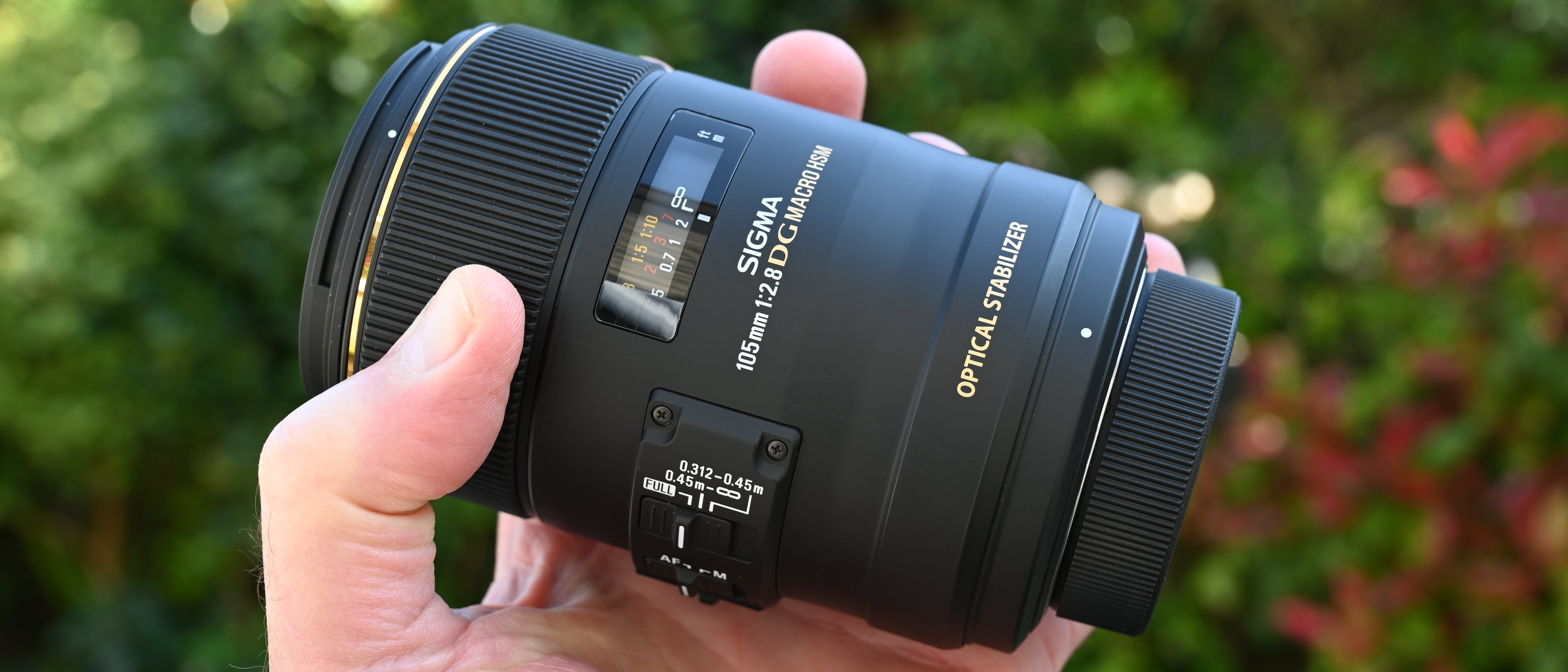The best bridge camera in 2025: ultra-zoom cameras for far off subjects
The best bridge camera will deliver high-quality images, have a relatively big zoom, and DSLR-style handling
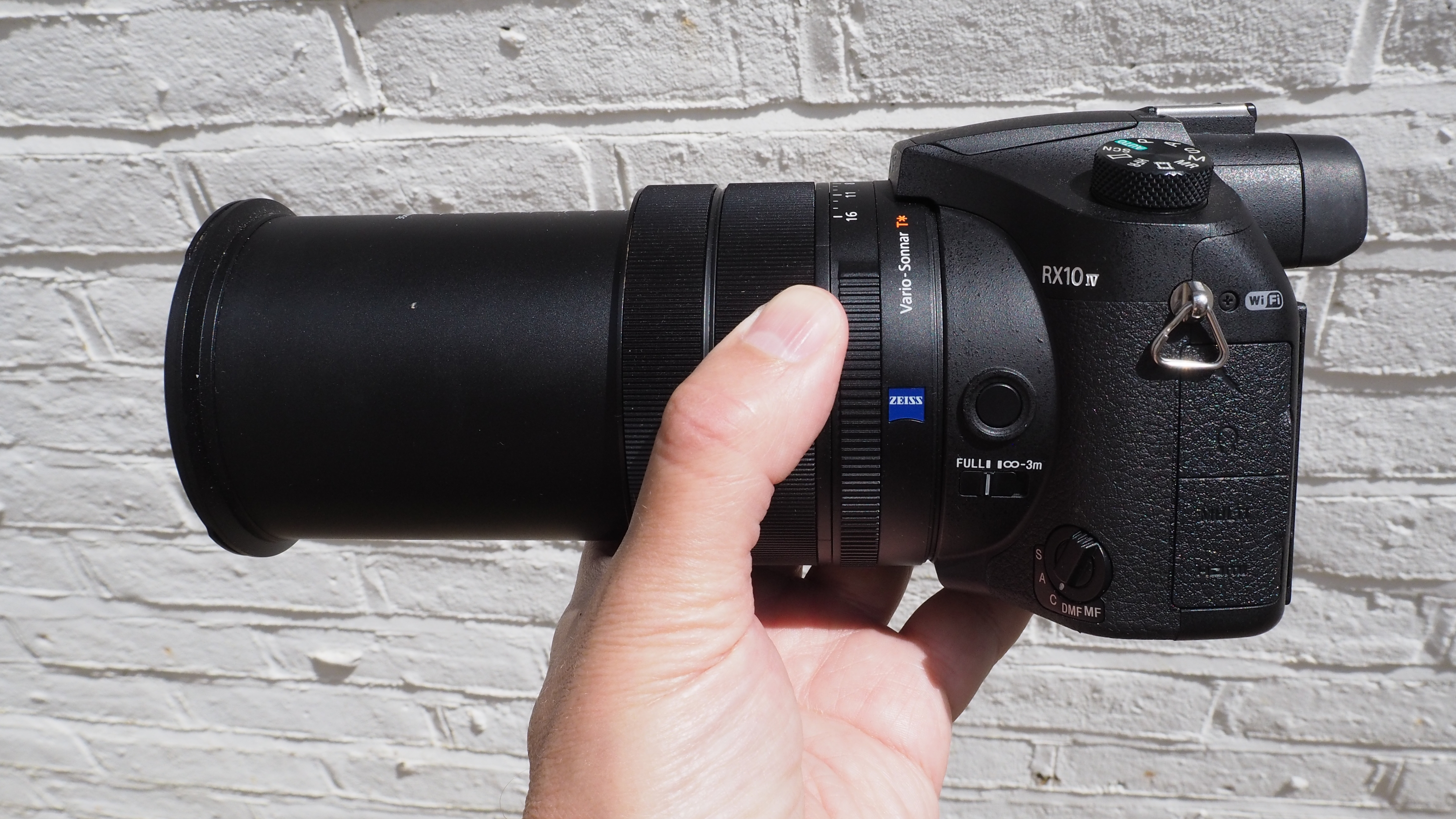
The best bridge camera combines the convenience of a compact camera with the zoom of a telephoto lens and the ergonomics of a DSLR. In fact they look and feel pretty similar to a DSLR, but they have a fixed lens and usually a massive zoom range – sometimes all the way up to 3000mm, which is a lens doesn't even exist for a traditional camera system!
This hybrid performance makes the best bridge cameras great for capturing wildlife, sports, or even astrophotography – and they won't cost you the earth. The enormous zoom covers everything from wide-angle landscape shots to detailed images of a single bird in the distance. Combined with fast burst speeds and 4K video, this can make them perfect for family, travel, and animal photography – but the massive zoom capability comes with a few compromises.
The main one is that image sensors in bridge cameras are smaller than those in the best DSLRs and best mirrorless cameras. They generally offer lower resolution, have less dynamic range and don't perform as well in low light. The fixed lens offers huge zoom, but doesn't shoot genres like macro photography – and combined with the smaller sensor, makes it harder to blur backgrounds for things like portraits.
Despite the limitations, bridges are still incredibly useful. You get a whole lot of bang for your buck and they put a lot of power in the hands of even inexperienced cameras users. Here are the best bridge cameras based on size, features, zoom reach, portability, and price…

The editor of Digital Camera World, James has over 20 years’ experience as a journalist and started working in the photographic industry in 2014 (as an assistant to Damian McGillicuddy, who succeeded David Bailey as Principal Photographer for Olympus). As one of DCW's principal testers, he has a thorough and detailed knowledge of the cameras selected for this guide.
The Quick List
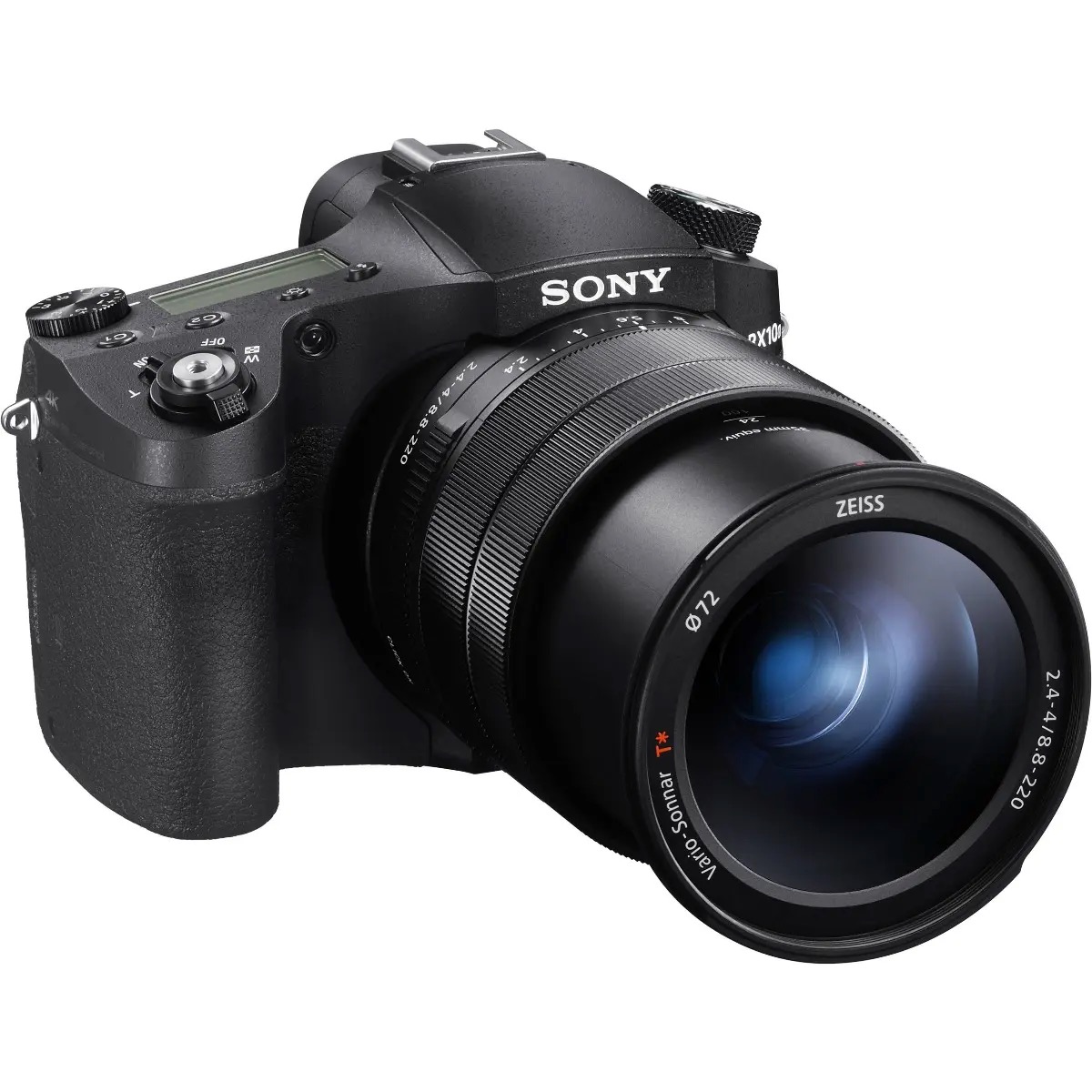
This premium bridge camera outperforms its rivals, as it has a larger sensor than usually found on bridge cameras. It also has a great autofocus system, which is useful for shooting action & wildlife.
Read more below
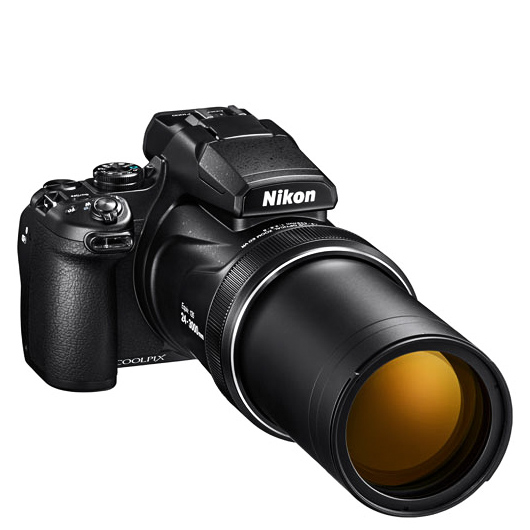
This is big, bulky bridge camera - but in return gives the biggest-ever built-in zoom range. It's telephoto range is so phenomenal it is used by security services for surveillance!
Read more below
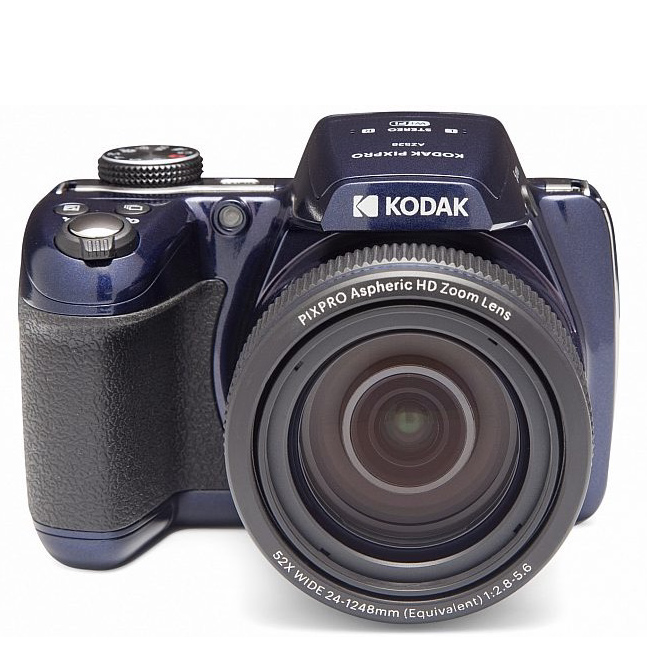
Kodak has a number of bridge cameras, which offer you a huge built-in lens range for a lower price than its Japanese rivals. With a 52x zoom, the price for this model is almost hard to believe.
Read more below
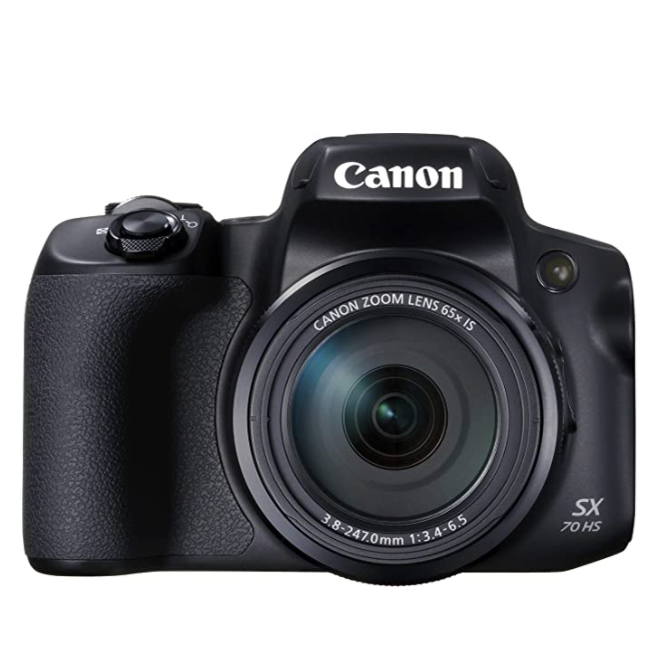
Bridge cameras are necessarily big compared to standard compact cameras. But this Canon is a good looking option that is smaller than many of its rivals, weighing 600g, and measuring 5 x 3.6 x 4.6in.
Read more below
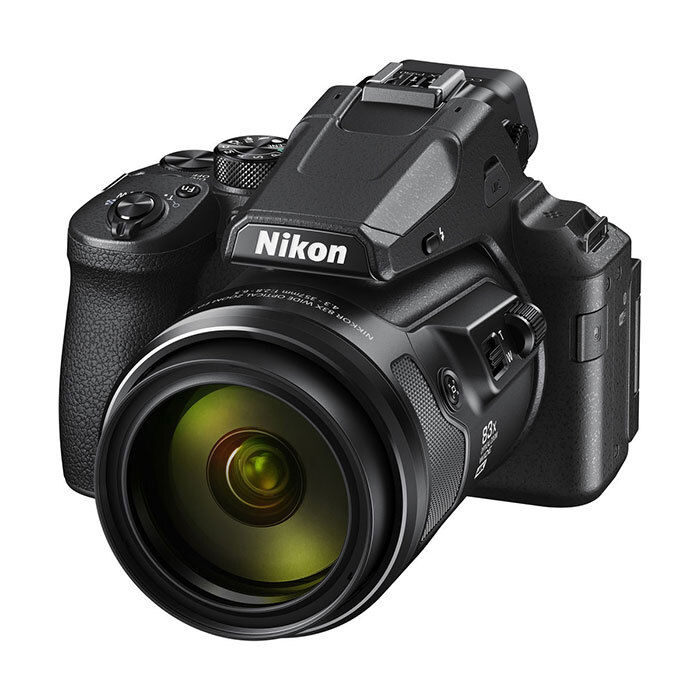
This is the predecessor to the monster record-setting P1000, but because of this has now been discounted to a bargain price. But still it boast a phenomenal 83x zoom (equivalent to a 24-2000mm).
Read more below
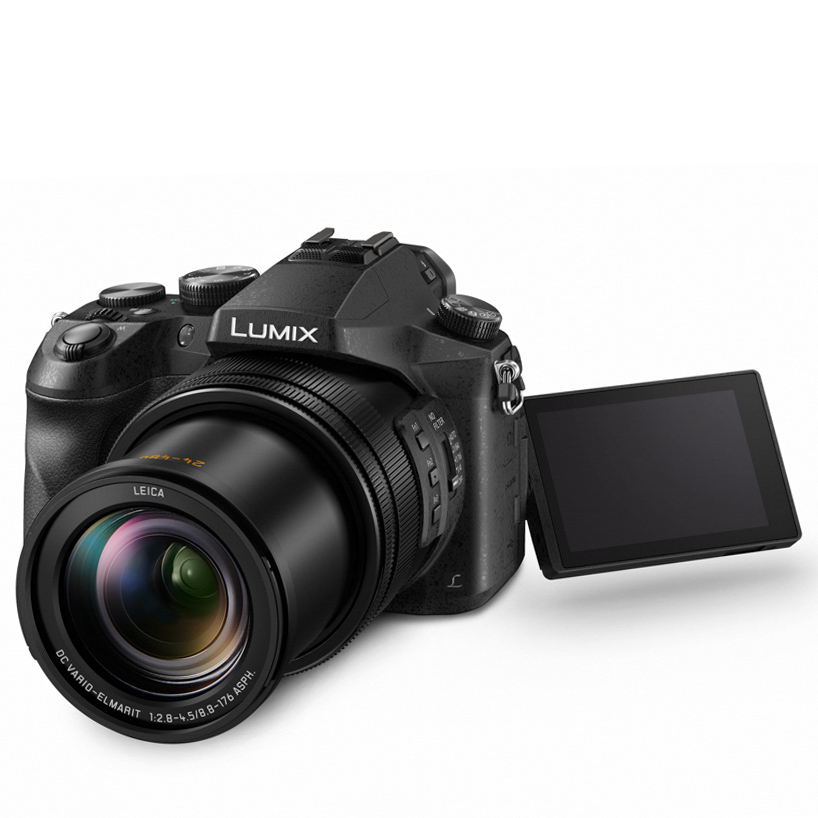
Sold as the FZ2500 in America, and as the FZ2000 in Europe, this is our pick if you want to use a bridge camera primarily to shoot video rather than stills. It offers full 4K shooting with the handy addition of a built-in variable ND filter.
Read more below
Best bridge cameras
Why you can trust Digital Camera World
Best image quality
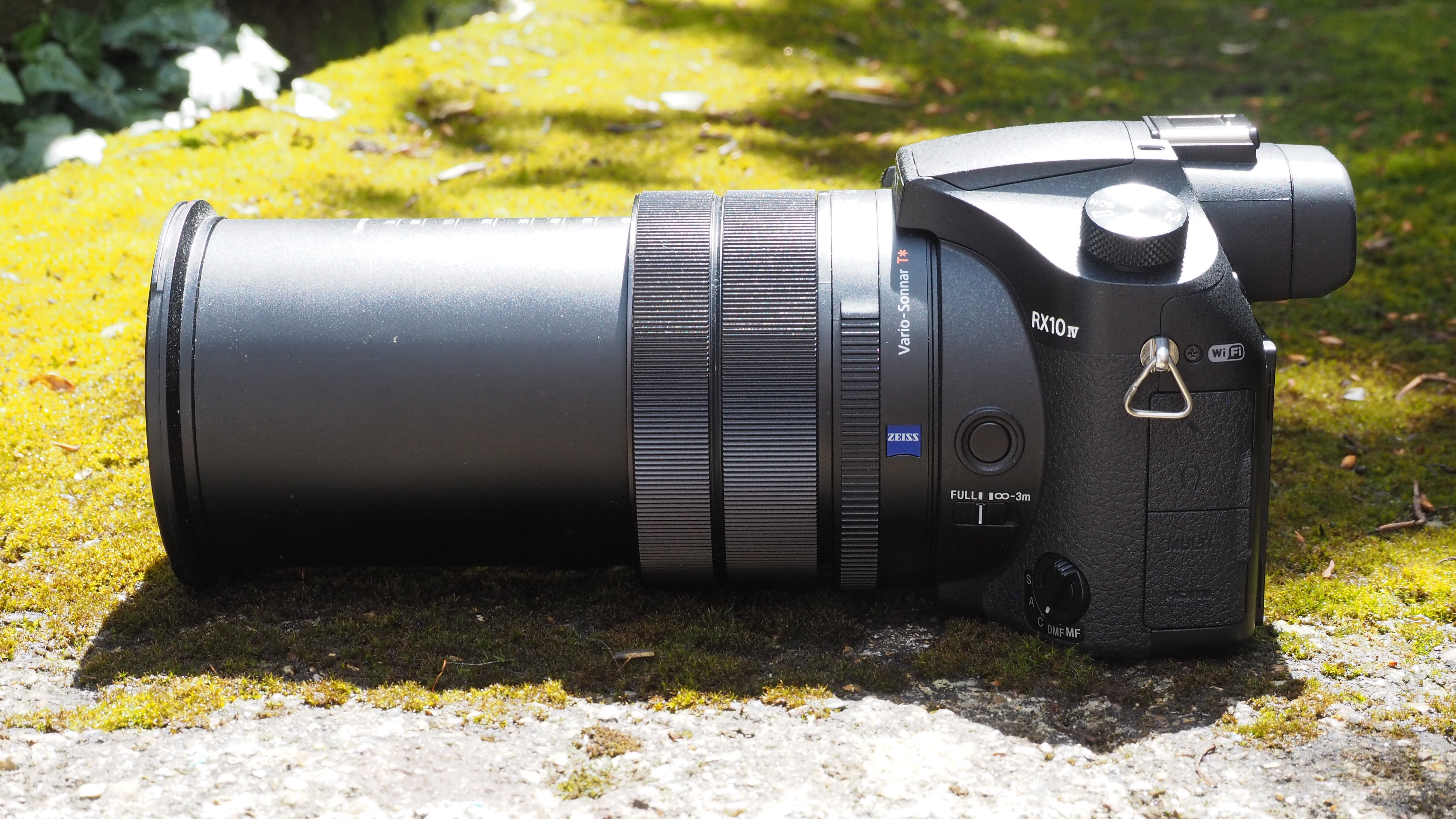
Specifications
Reasons to buy
Reasons to avoid
✅ You want big zoom AND great image quality: The combination of 25x optical zoom and a relatively large 1-inch-type sensor makes the RX10 IV a superb all-round performer.
❌ Your budget is tight: The RX10 IV is very expensive for a bridge camera - there are other options on this list that perform almost as well, but cost a lot less.
Even though the Sony Cyber-shot RX10 IV is the most expensive camera on our list, it has a high price tag for a reason. The most exciting upgrade from the RX10 III is the 315-point phase-detect AF system, which makes it much better at tracking moving subjects. It's also the first RX10 with a touchscreen.
Bluetooth and WiFi connectivity make it possible to share images to your smartphone on the move and, while the 24-600mm lens might not offer the biggest focal range, the fantastic 1-inch Sony sensor delivers arguably the best image quality of any camera here.
It's capable of 24fps continuous burst shooting as well as 4K video, making it a versatile and powerful all-round performer – even though you'll need to dig a little deeper into your funds.
Read our full Sony RX10 IV review
| Lab results | Score | Rating |
|---|---|---|
| Resolution (ISO 200) | 24/60 | ★★ |
| Dynamic range (ISO 200) | 11.37 EV | ★★★★ |
| Noise (ISO 200) | 37.48 decibels | ★★★★ |
Biggest zoom
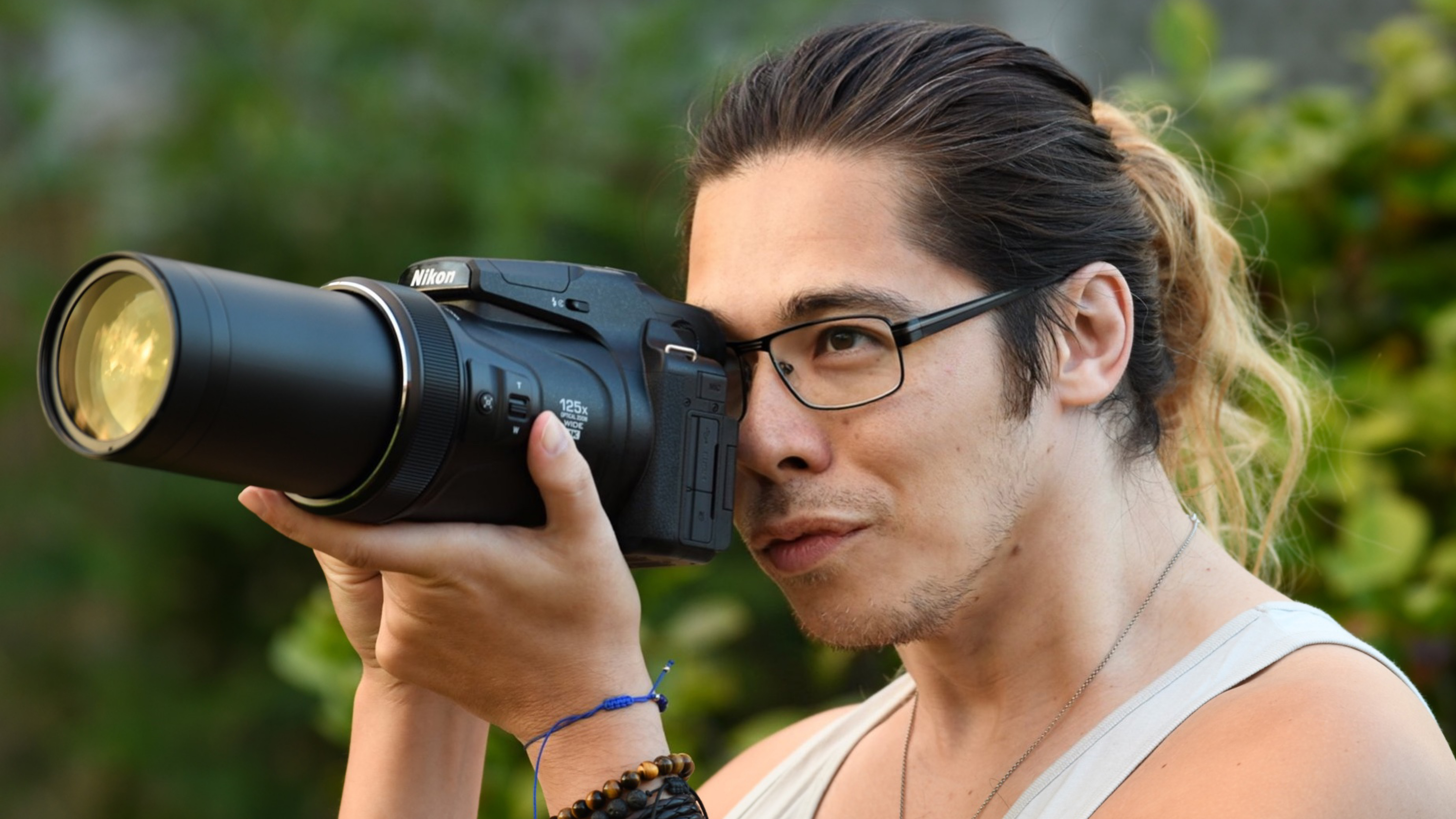
Specifications
Reasons to buy
Reasons to avoid
✅ You want ALL the zoom! The P1000 is practically a telescope - its zoom range is unrivalled, and may never be beaten. The optical image stabilization therefore needs to be good, and thankfully it is.
❌ You're expecting the last word in image quality: At the heart of this big beast is a tiny image sensor - smaller than in most current camera phones. Consequently image quality is mediocre at best.
Update: Sadly, Nikon has recently discontinued the P1000, but some retailers still have a few cameras remaining in stock. Buy now before they're gone!
I've never owned a bridge camera in my life, but as soon as I used the P1000 I knew that I wanted one! For me, the all-in-one zoom range is the most important thing on a bridge – and at its max zoom, the Nikon P1000 has an astonishing 3000mm focal length. Even if such a lens were available for a mirrorless camera (and even if it was affordable), the ability to go from shooting at 24mm all the way to 3000mm in a matter of seconds, without having to switch lenses, it simply incredible.
When shooting at the telephoto end, you do lose 3 full stops – taking the aperture down from a solid f/2.8 to a less impressive f/8. And at longer focal lengths there is a noticeable softness in images, even with the best camera technique (aided by impressive image stabilization). This isn't helped by the sensor being a relatively small 1/2.3-inch affair, and just 16MP at that.
Still, the P1000 boasts a high-resolution electronic viewfinder, 4K video capabilities and it shoots in RAW – and did I mention that its maximum zoom is three thousand millimeters? Okay, it's a high price for not a lot of sensor, but if range is your top priority then there's nothing better out there.
Read our full Nikon P1000 review
| Lab results | Score | Rating |
|---|---|---|
| Resolution (ISO 200) | Not tested | Row 0 - Cell 2 |
| Dynamic range (ISO 200) | 9.17 EV | ★★ |
| Noise (ISO 200) | 25.29 decibels | ★★ |
Cheapest option
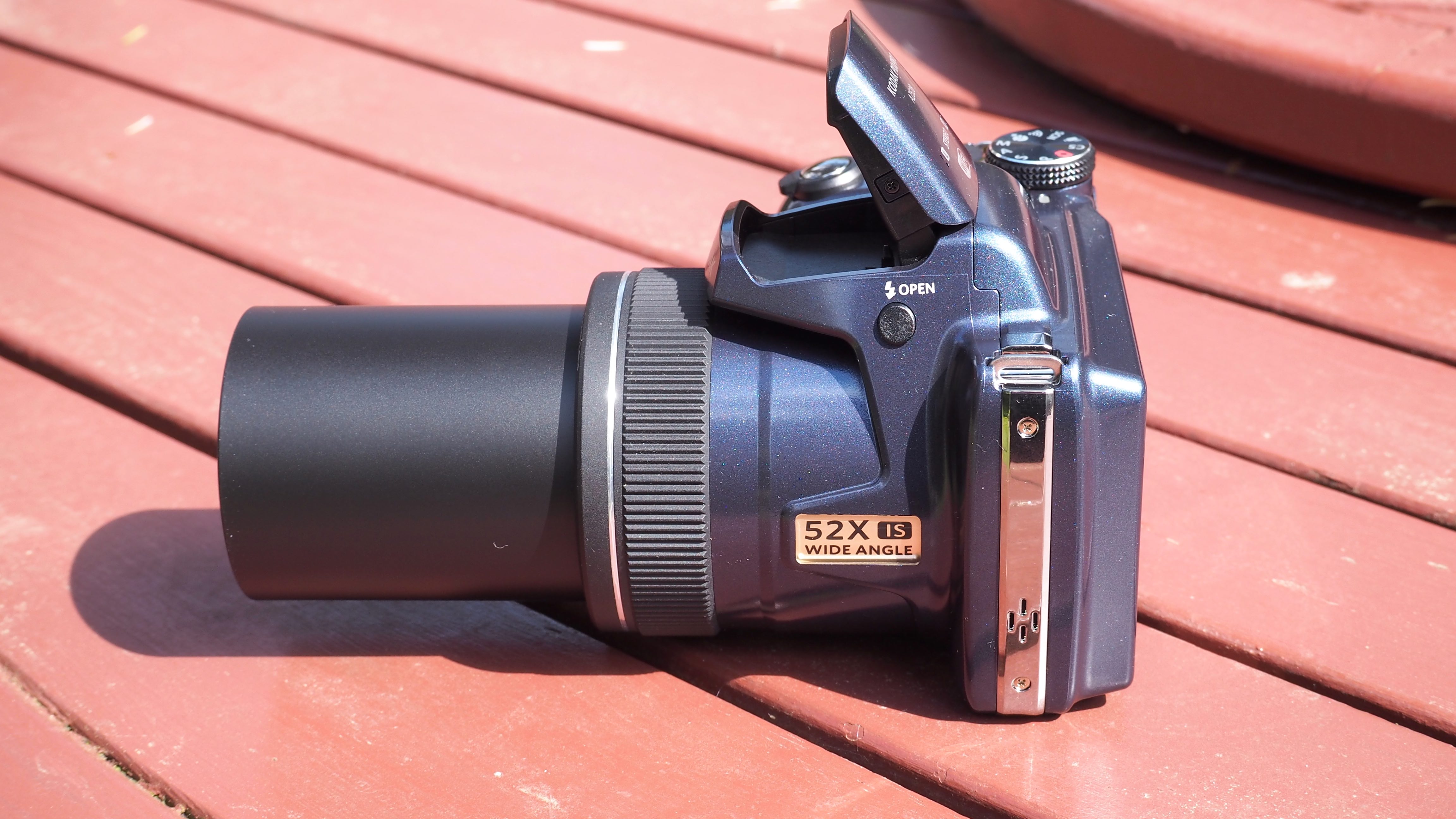
Specifications
Reasons to buy
Reasons to avoid
✅ You want big zoom for a small outlay: The Pixpro AZ528 delivers a huge amount of optical zoom for a very reasonable price.
❌ Image quality is a high priority: Image quality is fine, but nothing special. Images get softer the more you zoom in, and that's if you can hold the camera steady enough in the first place!
Kodak continues to play to a niche but potentially still a sizeable audience of photographers who competing brands have moved on from, with the Pixpro AZ528 all-in-one ‘superzoom’ while others have abandoned the area.
The huge 52x zoom still comes in very handy not just for budding wildlife photographers but also for casual sports photography fans, which makes this an incredibly versatile camera. However, it’s still saddled with a small-ish sensor and any camera like this means softer results when shooting handheld the further we creep towards its maximum zoom setting.
Read our full Kodak PIXPRO AZ528 review
Best for portability
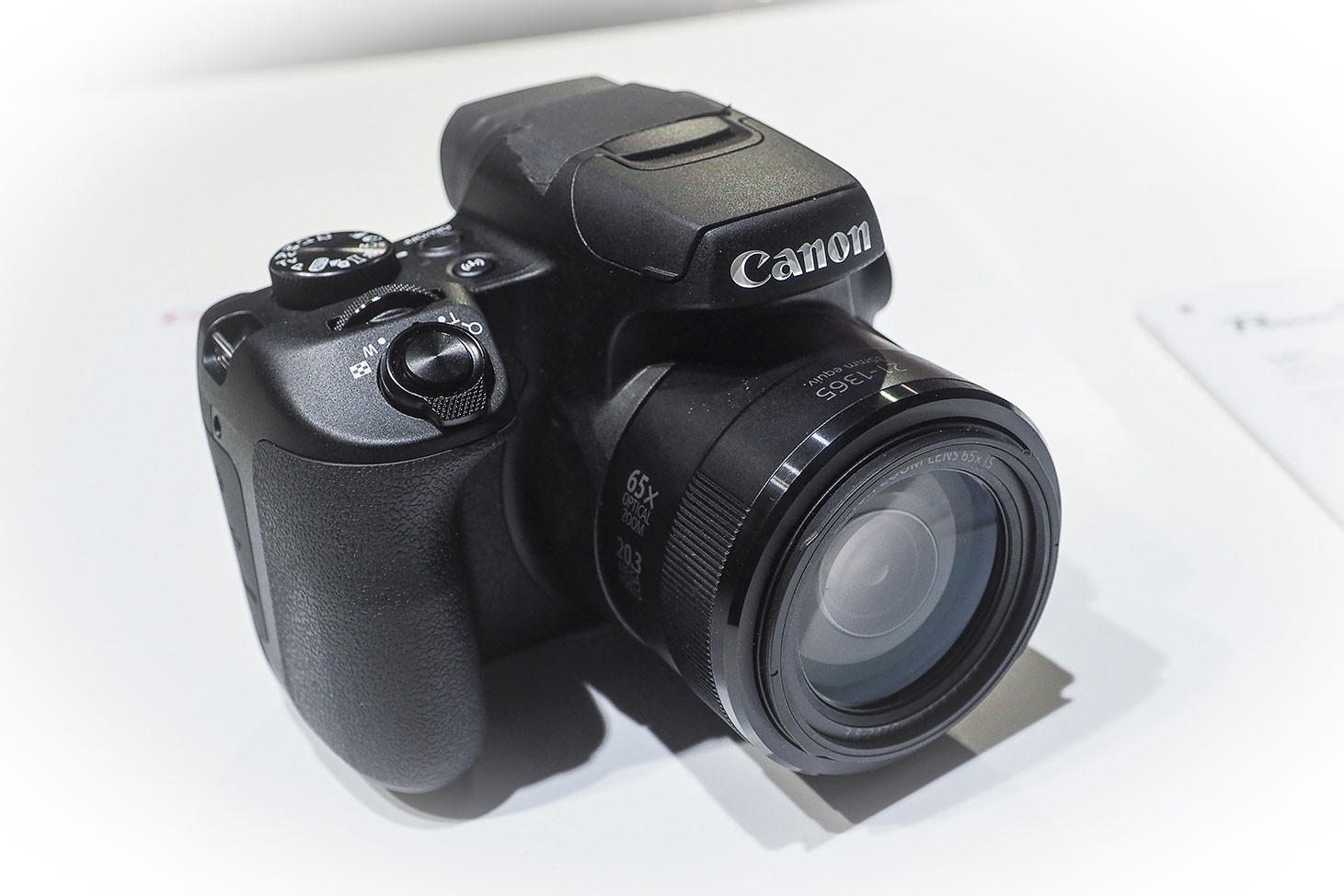
Specifications
Reasons to buy
Reasons to avoid
✅ It's just got to be Canon: Canon no longer develops new bridge cameras, and the SX70 HS is its last bridge model standing. It's not a bad camera, but newer rivals have outclassed it.
❌ You want maximum bang per buck: Apart from its big 65x zoom range, the aging SX70 HS no longer excels in any one area - you'll get better value elsewhere.
On paper, the SX70 HS looks a close rival to the Panasonic FZ2500 (below), offering a slightly longer maximum zoom and nearly matching the Panasonic's wide-angle setting. But its f/3.4-6.5 maximum aperture range is on the low side and its 20MP resolution can't overcome the limitations of the small 1/2.3-inch sensor size.
The SX70 does handle well and it's not that big for a bridge camera, but the opposition has moved on, with bigger zoom ranges, bigger sensors, or lower price points. The SX70 HS offers solid enough specifications but at a price point that makes its rivals look more tempting.
Read our full Canon PowerShot SX70 HS review
Best overall value
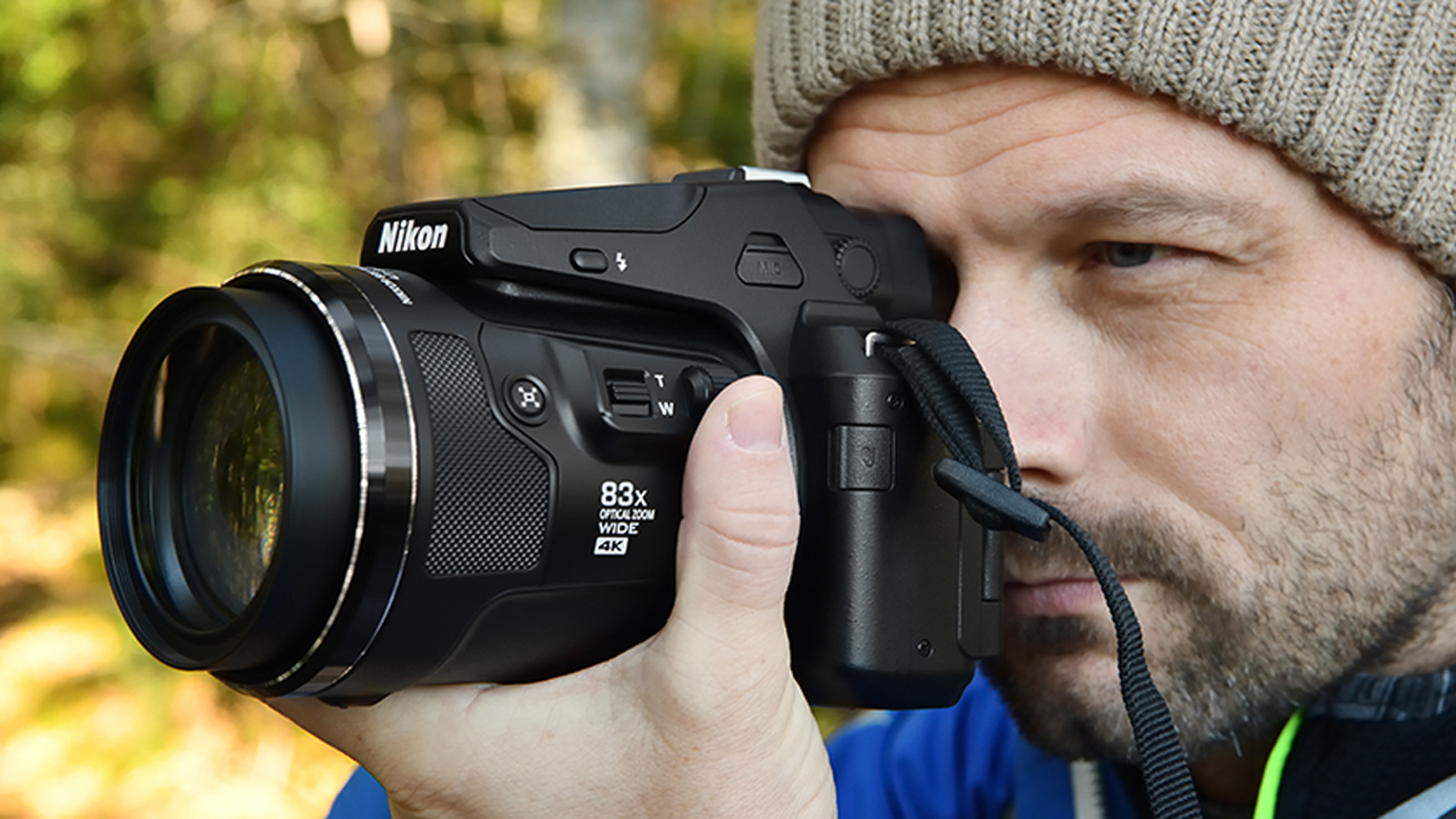
Specifications
Reasons to buy
Reasons to avoid
✅ You want a competent all-rounder: The P950 offers a good blend of long zoom (83x), acceptable image quality, manageable bulk, and 4K video capability.
❌ You're expecting stellar image quality: Like most bridge cameras, the P950 uses a surprisingly small sensor. Image quality is no better than a camera phone's, and in many cases it'll be noticeably worse.
The Coolpix P950 was a successor to the P900, and showed Nikon's ambition to have the biggest zoom on a bridge camera – a record-breaking baton now held by its bigger brother the Coolpix P1000 (above). Nonetheless, the lens on the P950 remains impressive, boasting 83x optical zoom with an equivalent focal length range of 24-2000mm – and if this somehow isn't enough for you, it can be digitally extended to 4000mm.
The P950 added a lot of features that people felt were missing or subpar on the P900: it improves the viewfinder, adds RAW capture and ups the maximum video resolution to 4K. The only reason it's not further up the list is its small sensor size – and that it now stands somewhat in the shadow of the P1000.
Read our full Nikon P950 review
Best for video
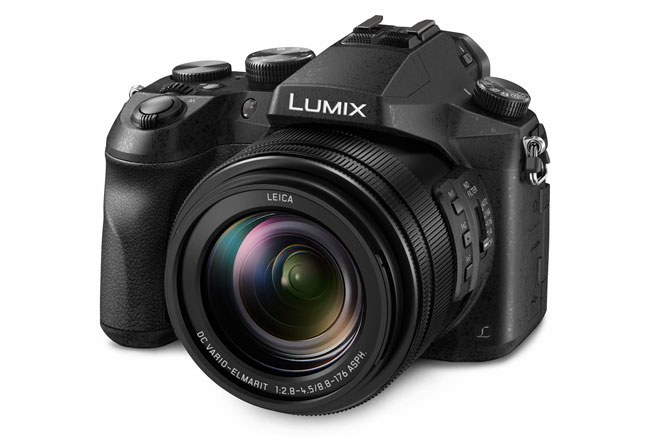
Specifications
Reasons to buy
Reasons to avoid
✅ You want better than average stills and video quality: Like the Sony RX10 IV (above), the FZ2500 uses a relatively large 1-inch-type sensor, giving decent image quality for a bridge camera. DCI 4K video quality is another welcome bonus.
❌ You want mega zoom reach: 20x optical zoom should be plenty for most situations, but on paper it's massively outclassed by some rivals, though they can only achieve the extra zoom by using a smaller, inferior image sensor.
Panasonic won many people over with the FZ1000, with its 1-in sensor, 25-400mm (Equiv.) f/2.8-4 zoom lens, 4K video, and masses of control making it a fine DSLR alternative. The FZ2500 (sold as the FZ2000 in Europe) delivers plenty more, including a slightly longer lens, touch-screen control, and an electronic viewfinder with a slightly higher magnification than before, but it's in the video where Panasonic has made the most significant improvements.
So, here we get DCI 4K video and a variable ND filter, for example, although the latter can, of course, be used for stills too. The lack of weather sealing is a pity, but its falling price, together with the occasional cashback deal, makes it a brilliant-value competitor to models in Sony's RX10 series.
See our full Panasonic Lumix FZ2500 / FZ2000 review
How to choose the best bridge cameras
Firstly, you need to decide on how to balance the size of the camera you want to carry to the range of the zoom. While a bigger sensor is advantageous, it does mean that often you'll have a smaller zoom range so you'll need to decide what's more important - image quality or the amount you can zoom. Depending on what you plan on shooting most will determine what should be more important. If you are investing in a bridge camera to take on Safari, for example, it might be a good idea to opt for something with the biggest zoom range possible but if you want a versatile, all-rounder and can forgo a 1000mm zoom I'd definitely opt for image quality.
You'll also need to think about how much you're willing to spend. The bigger sensors do come at a higher price tag but often have features that make it worth it. For this reason, we've split the guide into 1-inch sensor bridge cameras with a smaller zoom range and 1/2.3-inch sensor bridge cameras with a massive zoom range and average picture quality.
Best bridge cameras: FAQs
What's the best bridge camera to buy?
There's no doubt that the 20.1MP, 1-inch sensor Sony RX10 IV is the "best" bridge camera right now in terms of image quality – but it has a much more limited zoom range than its rivals. Which isn't to belittle its still-amazing 24-600mm range, as that is definitely more than enough for most people!
However, for me, the Nikon P1000 is definitely where I'd put my money. Yes it's only 16MP and yes it's only a 1/2.3-inch sensor, but its zoom range is an absolutely absurd 24-3000mm. After using this to photograph wild animals, trust me – you'll be sold (provided you don't need to print your images too big). If you want to save money, the older Nikon P950 with a slightly less zoom is better value, as it is now heavily discounted
For an all-round performer, you can't go far wrong with the Canon PowerShot SX70 HS. It still rocks a 1/2.3-inch sensor but packs 20.3MP of resolution, and a 21-1365mm zoom that offers good wide-angle and telephoto capabilities - but in a camera that is smaller than many of its bridge rivals.
What is a bridge camera?
The aptly named bridge camera bridges the gap between DSLRs and compact cameras. They have bigger bodies, non-interchangeable lenses with massive zoom ranges, and small(ish) sensors. When bridge cameras first came out, they had really small 1/2.3-inch sensors, like the kind you find in the best point-and-shoot cameras.
However, these days brands such as Sony, Panasonic, and Canon make bridge cameras that have a larger, 1-inch sensor. They offer better image quality and better low-light performance but these features come at a price.
Is a bridge camera good for wildlife photography?
Bridge cameras can be some of the best cameras for wildlife photography. The incredible zoom range they offer means they are fantastic all-in-one tools that go from close-ups shots in one instant to telephoto shots the next – making them more flexible than any DSLR or mirrorless camera setup, even if you could afford the equivalent lenses.
The only thing to be aware of is the sensor size of bridge cameras. Because they tend to top out at 1-inch, they simply can't offer the same resolution, fidelity or performance. If you want to blow your pictures up into huge prints, especially working in low light, a traditional camera will offer better quality. But for online use, social media sharing and photo books, bridge cameras are very formidable.
What is the best bridge camera brand?
Most of the big brands make bridge cameras, and they all offer good performance – so it really depends on what you're looking for. The Sony RX10 IV is considered to boast the best image quality, Panasonic's bridge cameras possess all-around performance, while Nikon's P1000 and P950 are the best in terms of zoom range.
How we test the best bridge cameras
We test bridge cameras in real-world conditions - using the camera to shoot images in a range of different lighting conditions to see how they perform. Our team of reviewers has collectively tested hundreds of different models - and benchmark performance against results from current rivals and previous models. We pay particular attention to overall image quality - and to the detail captured in particular throughout the zoom range. These cameras are designed to be easy to use, so we also pay special attention to the ergonomics and handling of each of the models we test.
See more on how we test products at Digital Camera World
Get the Digital Camera World Newsletter
The best camera deals, reviews, product advice, and unmissable photography news, direct to your inbox!

James has 22 years experience as a journalist, serving as editor of Digital Camera World for 6 of them. He started working in the photography industry in 2014, product testing and shooting ad campaigns for Olympus, as well as clients like Aston Martin Racing, Elinchrom and L'Oréal. An Olympus / OM System, Canon and Hasselblad shooter, he has a wealth of knowledge on cameras of all makes – and he loves instant cameras, too.
